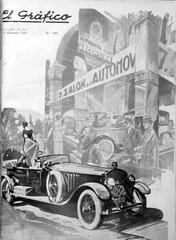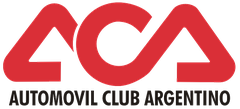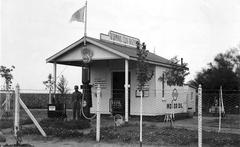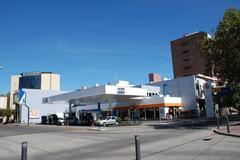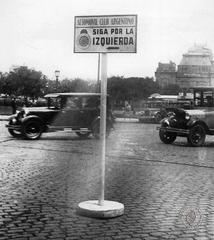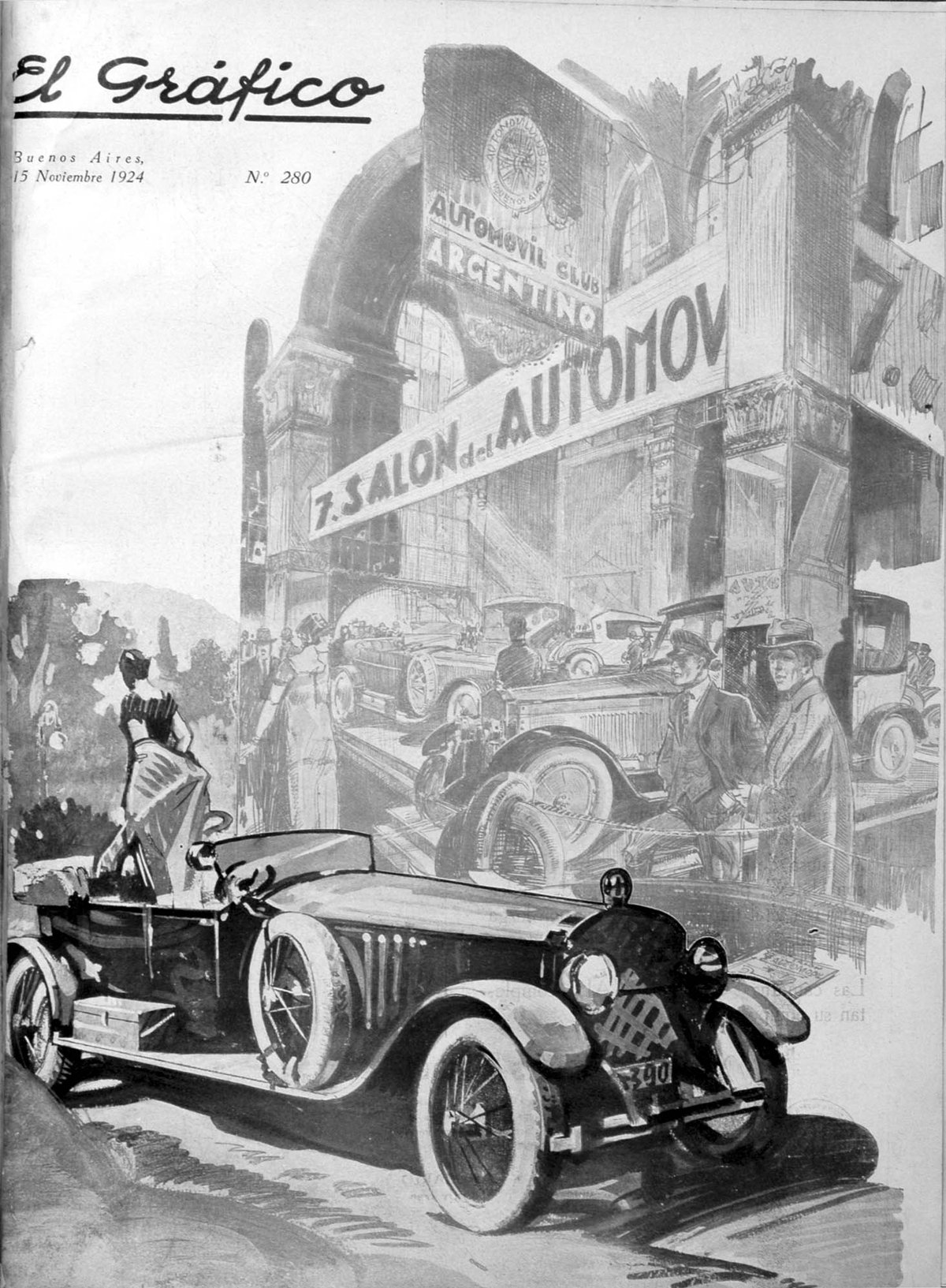
Automóvil Club Argentino: Visiting Hours, Tickets, and Historical Highlights in Buenos Aires
Date: 14/06/2025
Introduction
The Automóvil Club Argentino (ACA) is a cornerstone of Argentina’s automotive and cultural heritage, making it an essential stop for visitors seeking Buenos Aires historical sites. Established in 1904 by pioneering motorists such as Dalmiro Varela Castex—the first to introduce a motor vehicle to Argentina—the ACA has played a fundamental role in shaping the nation’s motoring landscape, advocating for road infrastructure, and fostering motorsports. Its iconic headquarters on Avenida del Libertador, adjacent to Palermo Park, is not only a hub for auto enthusiasts but also a remarkable example of Argentine Rationalist and modernist architecture, adorned with works by renowned artists like José Fioravanti and Alberto Lagos.
Inside the headquarters, visitors can explore the ACA Museum, home to a significant collection of vintage and racing vehicles—including some driven by racing legend Juan Manuel Fangio—as well as rare archival materials that chronicle the evolution of motoring in Argentina. The ACA’s enduring legacy in road mapping, tourism, and national identity continues to this day.
This guide provides comprehensive information on visiting hours, tickets, accessibility, and tips for exploring the ACA Museum and nearby attractions, ensuring an enriching experience for history buffs, architecture lovers, and automotive aficionados alike.
For the latest details and event schedules, always consult the official ACA website and related travel resources (Parabrisas, Argentina.gob.ar).
Table of Contents
- Introduction
- Founding and Early History
- The ACA’s Expansion and Societal Impact
- Architectural and Artistic Highlights
- Visiting the ACA Museum: Hours, Tickets, and Practical Information
- What to See: Collection Highlights
- Visitor Tips and Nearby Attractions
- Frequently Asked Questions (FAQ)
- Conclusion
- References and Further Reading
Founding and Early History
The ACA was founded on June 11, 1904, in Buenos Aires, inspired by European automobile clubs. Its creation was spearheaded by Dalmiro Varela Castex, who brought Argentina’s first car in 1892. Early members included notable figures like Felix Álzaga Unzué and Alfredo Fernández Torres, reflecting the club’s elite and progressive roots (Parabrisas).
From its inception, the ACA sought to unite motorists, advocate for better roads, and promote the use of automobiles. By 1905, it organized the country’s first auto caravans, contributing to the mapping and improvement of Argentina’s road network.
The ACA’s Expansion and Societal Impact
During the 1920s and 1930s, Argentina emerged as a leader in vehicles per capita, rivaling global automotive powers. The ACA cultivated a robust motoring culture, joining the Fédération Internationale de l’Automobile (FIA) in 1926 and promoting long-distance races known as “Grandes Premios.” Its partnership with YPF in 1936 was pivotal, leading to a nationwide network of fuel stations, hotels, and roadside services, which democratized automobile travel and stimulated tourism (Nuevo Mundo Mundos Nuevos, Argentina.gob.ar).
Throughout its history, the ACA also played a central role in motorsport, road safety, and traveler support, helping to shape national identity and modernity.
Architectural and Artistic Highlights
The ACA headquarters, completed in 1942 at Av. del Libertador 1850, stands as a landmark of Argentine Rationalist architecture. Designed by Antonio U. Vilar and Alejandro Bustillo, with contributions from Jorge Bunge and Willi Ludewig, the building features a marble-clad social wing, a monumental portico, and an industrial-style service wing.
Inside, the reception hall impresses with beige marble, copper accents, and a display of vintage cars. The building is also an artistic treasure, boasting murals and sculptures by José Fioravanti, Alberto Lagos, Gonzalo Leguizamón Pondal, and Alfredo Guido. In 2017, the headquarters was declared a National Historic Monument (Argentina.gob.ar).
Visiting the ACA Museum: Hours, Tickets, and Practical Information
Location
- Address: Av. del Libertador 1850, Palermo, Buenos Aires
- Neighborhood: Palermo, near Recoleta. Easily accessible by bus, subway (Subte), and taxi.
Visiting Hours
- Headquarters: Monday to Friday, 9:00 AM to 5:00 PM
- Museum: Monday to Friday, 10:00 AM to 5:00 PM
- Note: Closed on weekends and public holidays. Always check the ACA website for changes or special events.
Tickets and Admission
- Admission: Free for all visitors to the museum and public areas.
- Guided Tours: Occasionally available; inquire in advance for schedules and reservations.
- Special Exhibitions: May require advance booking or a nominal fee.
Accessibility
- Fully wheelchair accessible, with elevators and adapted restrooms.
- Staff assistance is available upon request.
Facilities
- Restrooms and seating areas.
- No on-site café, but Palermo offers numerous nearby dining options.
- Limited parking available; public transport is recommended.
What to See: Collection Highlights
Early Motoring Relics
- Daimler 1892: Among Argentina’s earliest automobiles.
- Krieger Electric Car 1898: Early electric propulsion technology.
- Peugeot 1903 & Renault 1908: Showcasing the evolution of early 20th-century engineering.
Racing and Sports Cars
- Ferrari 166 (1949–1950): Driven by Juan Manuel Fangio, a motorsport legend.
- Brabham BT 36 (1971) & BT 30 (1970): Cars driven by Carlos Reutemann during his European racing career.
- Hudson 1924: Used in early national competitions.
Unique and Historical Vehicles
- Yruam (1927–1928): An Argentine innovation by Maury.
- Mors 1899: Rare European import.
- Popemobile: Used by Pope John Paul II in 1982.
Memorabilia and Archives
- License plate number 1, registered to Dalmiro Varela Castex.
- Photographs, blueprints, trophies, and documents detailing ACA’s institutional history.
Visitor Tips and Nearby Attractions
Tips for a Smooth Visit
- Weekday mornings are less crowded.
- Photography is allowed without flash; respect any signage on restrictions.
- Guided tours can enhance your experience; book in advance if possible.
- Use public transport for convenient access.
Nearby Attractions
- Palermo Parks: Scenic green spaces for relaxation.
- Buenos Aires Botanical Garden: Lush gardens nearby.
- National Museum of Fine Arts: Only 1 km away.
- Recoleta Cemetery and Floralis Genérica: Easily accessible for a full day of cultural exploration.
Frequently Asked Questions (FAQ)
Q: What are the ACA museum visiting hours?
A: Monday to Friday, 10:00 AM to 5:00 PM. Closed on weekends and public holidays.
Q: Is there an admission fee?
A: No, entry to the museum and headquarters is free of charge.
Q: Are guided tours available?
A: Yes, but they should be arranged in advance. Staff are always available to assist.
Q: Is the museum wheelchair accessible?
A: Yes, with elevators and adapted restrooms.
Q: Can I take photographs inside?
A: Photography is generally allowed in public areas; check for restrictions on certain exhibits.
Q: How do I get there?
A: The site is easily reached by bus, Subte (Buenos Aires subway), or taxi.
Conclusion
A visit to the Automóvil Club Argentino headquarters and museum offers a captivating journey through Argentina’s automotive past, architectural innovation, and cultural identity. With its free admission, accessible facilities, and central location, the ACA is a must-visit for locals and tourists alike. Explore historic vehicles, admire national art, and discover the club’s pivotal role in shaping Argentine society.
Plan your visit by checking the latest information on the official ACA website and consider combining your trip with nearby cultural attractions in Palermo and Recoleta. Download the Audiala app for audio guides, and follow ACA’s social channels for updates on exhibitions and events.
References and Further Reading
- Parabrisas – Los orígenes del Automóvil Club Argentino
- Argentina.gob.ar – Automóvil Club Argentino Monument
- Nuevo Mundo Mundos Nuevos – ACA’s Role in Argentine Society and Identity
- Automóvil Club Argentino Official Website
- Automotive Museum Guide – Automóvil Club Argentino Museum
- Buenos Aires Tourism – Argentine Automobile Club Museum
